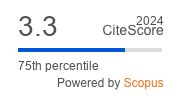Article | Open Access
| Ahead of Print | Last Modified: 6 October 2025
Digital Technologies and Refugees’ Social Inclusion: The Use of ICTs by NGOs
| Views: | 736 | | | Downloads: | 428 |
Abstract: Numerous studies highlight the direct impact of digital technologies on migrants, shaping their decisions to migrate, their migration trajectories, and their experiences in their destination countries. This article contributes to this emerging literature by exploring the influence of digital technologies on the inclusion of migrants, specifically by examining how non‐governmental organizations (NGOs) use information and communication technologies (ICTs) to support refugees—an area that has received limited attention in the existing literature. In particular, the article focuses on NGOs in Türkiye and the Netherlands. We conducted interviews with representatives of 23 NGOs across the two countries to understand how and why they use digital technologies. The findings show that NGOs in both countries use ICTs extensively for (direct and indirect) communication, advocacy, and service provision, with clear benefits but also challenges. ICTs enhance visibility and reach, support multilingual and remote service delivery, and help NGOs raise funds and build an institutional identity. Challenges include unequal access to digital tools and insufficient digital literacy by both NGO staff and their clients, lower engagement in online formats, and the risk of losing personal connection due to standardized digital processes.
Keywords: digital technologies; ICTs; NGOs; refugees; social inclusion; The Netherlands; Türkiye
Published:
Ahead of Print
Issue:
Vol 14 (2026): Digitalization and Migration: Rethinking Socio-Economic Inclusions and Exclusions (In Progress)
© Giacomo Solano, Iris Poelen, Safiya Farokh, Sheila Omosomwan. This is an open access article distributed under the terms of the Creative Commons Attribution 4.0 license (http://creativecommons.org/licenses/by/4.0), which permits any use, distribution, and reproduction of the work without further permission provided the original author(s) and source are credited.


